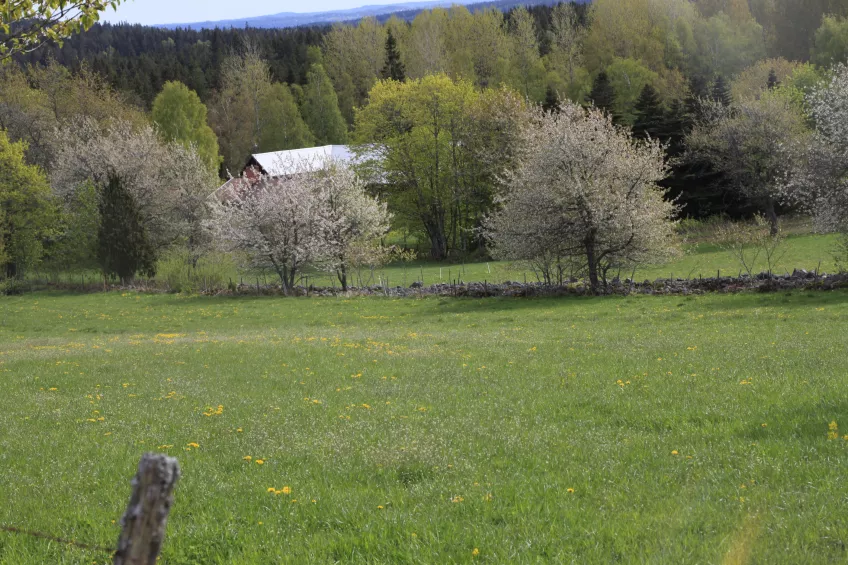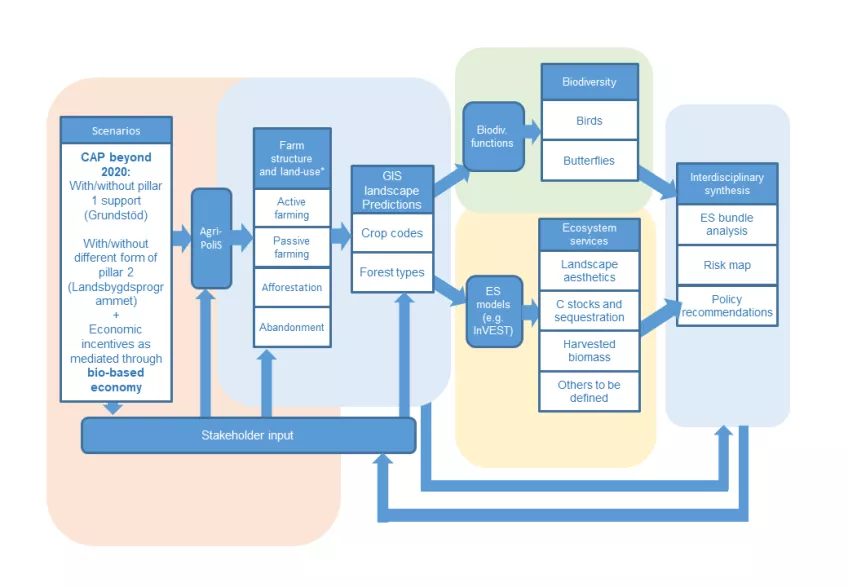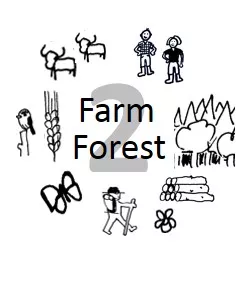Farm2Forest research
Anticipating and mitigating impacts of future agricultural policy reform on biodiversity and ecosystem services in mixed farming-forestry landscapes
Farming plays an essential role for society in maintaining biodiversity and ecosystem services in European agricultural landscapes, which is a major rationale for continued subsidies under the Common Agricultural Policy (CAP) of the EU. Recent political changes within and beyond the EU have increased the likelihood of more fundamental reforms of the CAP post-2020.
This could negatively affect the viability of farming and the type of farming in marginal regions, a process already observed in response to past CAP reforms. This is worrying because marginal regions with low agricultural productivity are often characterised by a mosaic of forests and farmland fostering high biodiversity and hotspots for cultural ecosystem services.
There is a pressing need to anticipate the extent of the changes and adapt policy for mitigation. This requires mobilizing and increasing our knowledge of the social, economic and biological processes underlying the relationship between policy and land-use in marginal farming areas, and biodiversity and ecosystem services at local, landscape and regional scales. High-resolution land and crop cover databases, projections from farm agent-based models and models for biodiversity and ecosystem services can be combined to perform such an integrated assessment.
Three challenges must be tackled
First, we have poor knowledge on how the farming activity is indirectly subsidized by non-farming activity such as forestry, industry and services, as well as farming activity in other more productive regions. Circumstantial evidence suggests that taken together these could act as a significant buffer to policy change, but the extent to which this is the case likely varies across regions.
Secondly, the farming activities are very heterogeneous, with drastic differences at field and farm scale between active and idle farms, and between landscapes with share of forests and fragmentation of agricultural habitat being very variable. This suggests that the effects of policy change may be counterintuitive and spatially heterogeneous.
Finally, predictions of biodiversity and ecosystem services will require adapted empirical data sampling and upscaling schemes due to variability in management intensity (for example active farming versus idle farming) across spatial scales.
Here, we intend to bridge these gaps combining an existing spatially explicit economic and ecological modelling framework with tailored empirical biodiversity and ecosystem service data collection, to answer the following research questions:
- How and where projected changes in the CAP after 2020, in conjunction with the rise of the bio-based economy, will affect the share of farming, forestry and intermediate land-use forms in marginal areas?
- Given the predicted changes in land-use, how and where will biodiversity and ecosystem services at the local, landscape and regional scale be affected?
- Which alternative policy instruments (for example results-based payment, regional prioritization) might efficiently lead to their preservation?
Contact
Project leader
Yann Clough – portal.research.lu.se
yann [dot] clough [at] cec [dot] lu [dot] se (yann[dot]clough[at]cec[dot]lu[dot]se)
046-222 68 31
076-226 80 70
Collaborating researchers
- Cecilia Akselsson – portal.research.lu.se
- Mark Brady – portal.research.lu.se
- Paul Caplat – paulcaplat.weebly.com
- Yann Clough – portal.research.lu.se
- Juliana Dänhardt – portal.research.lu.se
- Johan Ekroos – portal.research.lu.se
- Henrik Smith – portal.research.lu.se
- Fabian Roger – portal.research.lu.se
- Niklas Boke-Olén – portal.research.lu.se
- Georg Andersson – portal.research.lu.se


